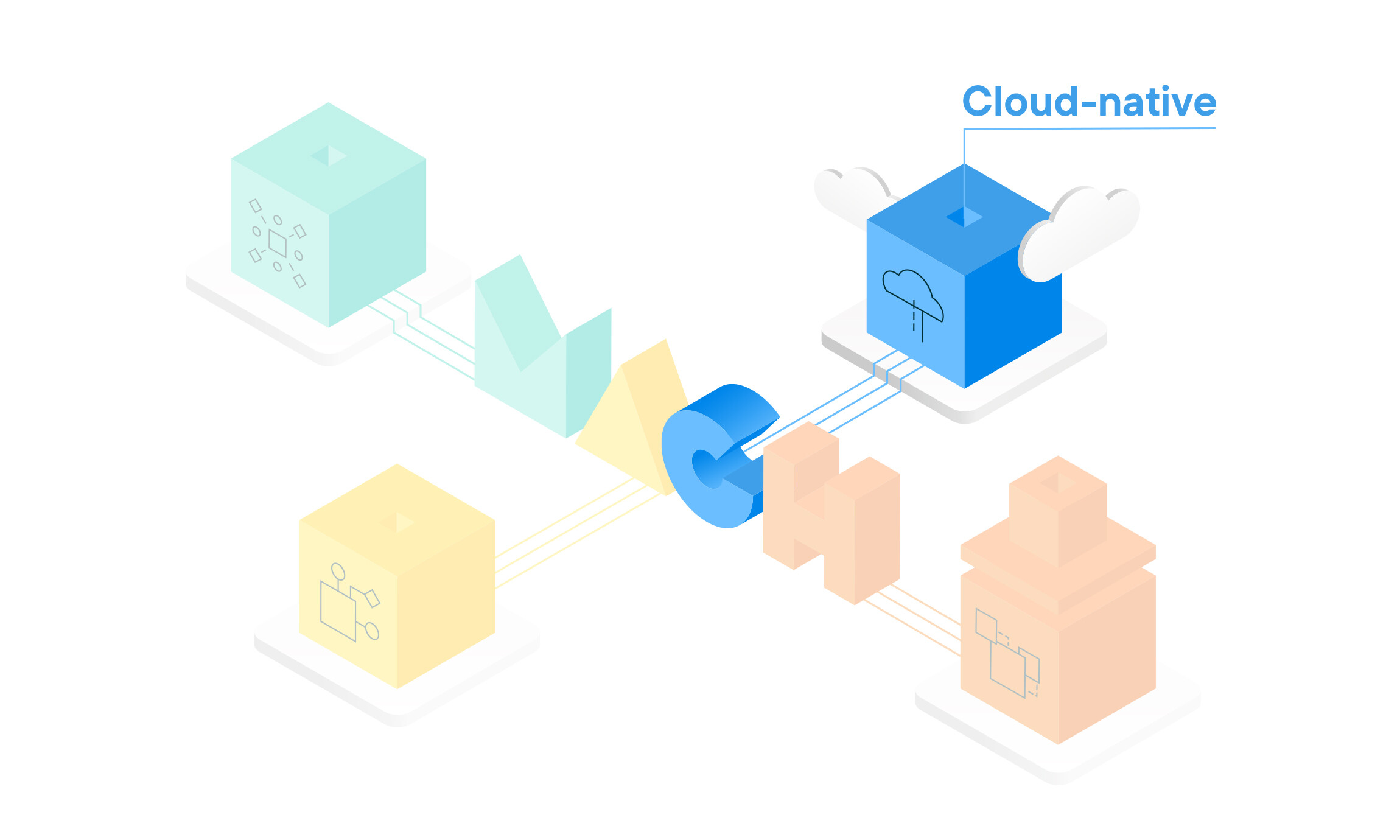
If you think moving files and data to the cloud means cloud-native, you’re wrong! Cloud-native is so much more than that. In this article, we explain what exactly "cloud-native" means and how it is beneficial for digital commerce.

Just like Mach represents the speed of sound, commercetools’ MACH™ architecture represents speed to help you compete in today’s fast-paced digital commerce world. MACH stands for Microservices, API-first, Cloud-native and Headless and is quickly becoming the industry standard for developing and delivering incredible digital experiences. Here, we look specifically at what the "C" in MACH stands for — cloud-native — and why it is such an essential element of MACH. So get ready to explore the world of cloud-native architecture and learn how it can take your digital commerce to the next level.
Benefits of cloud-native commerce
One of the most prominent benefits of cloud computing is access to files, no matter where you are. Local devices or additional servers are superfluous. Cloud-native platforms not only save money, they go one step further: They are created in the cloud itself and are therefore part of a "cloud ecosystem."
All applications and services are not just hosted on the cloud, they are developed in the cloud and can publish or receive events. The commercetools founders embraced this principle right from the start and built the commercetools platform cloud-native from the ground up. It’s no coincidence that all processes run in the cloud here — from the development environment, to testing, to the microservices that make commercetools so unique.
This in turn means that retailers and brands who launch their online presence using a platform like commercetools can find all the tools they might need in the cloud and can also use them directly there. They also gain an enormous security advantage because the commercetools tech team is able to respond instantly to any issues. Every touchpoint that includes commerce — from mobile apps to classic online shops — remains free of defects, products remain visible and costs do not rise.
Limitless in the cloud
With a cloud-native system, digital marketing teams can get creative. New offers, promotions and even workflows can be implemented quickly and easily. Another major benefit of a cloud-native platform is the ability to handle extreme (or even high) spikes in online sales due to seasonal traffic or highly successful promotions. The system scales automatically to accommodate the increase.
In today’s "insta-world," fast reaction times can make a major difference in conversions. With a cloud-native platform, response times of <100 milliseconds per request can be achieved. Innovations such as VR/AR (virtual/augmented reality) shopping can be tested and put online with outstanding speed.
The decision to select a cloud-native architecture is therefore a critical step in a successful eCommerce strategy. In combination with microservices, API interfaces and headless commerce, the commercetools solution allows retailers, brands and manufacturers to stay ahead of the inevitable changes in commerce. Isn’t that what you should expect from a next-generation commerce platform?
Real-world benefits of going cloud-native
commercetools has been built as a truly multi-tenant platform that runs in certified data centers in Europe, the US and APAC, and is hosted on Google Cloud and Amazon Web Services (AWS). This cloud-native technology has been the game-changer that commercetools customers like Ulta Beauty and BMW Group had been waiting for. These savvy companies made the move to the cloud and are now reaping the rewards of improved scalability, agility and reliability.
First, let's look at Ulta Beauty — the largest US retailer that is no stranger to makeovers. By moving cloud-native technology in Google Cloud, Ulta Beauty modernized its eCommerce solution and improved its agility and responsiveness. Plus, Ulta Beauty is prepared to handle surges in traffic through auto-scaling while maintaining high-speed performance during holiday shopping season.
With these changes [cloud-native commerce], we are ready for a holiday season that everyone — even those of us in IT — gets to enjoy. We’re positioned to continuously focus on new, better ways to serve our guests
IT Architect, Ulta Beauty
Finally, there's the BMW Group, a luxury car manufacturer that knows a thing or two about performance — and they similarly don't disappoint when it comes to their eCommerce operations. By moving into Google Cloud, BMW Group can easily serve markets worldwide and house a multitude of brands. In addition to showcasing its enormous catalog of automotive products and accessories, the BMW Group aimed to present complex digital products, such as Connected Drive and bookable services, including routine maintenance checks, oil changes and more, via digital commerce interactions.
To learn more about cloud commerce and why you should migrate, download our white papers, The Composable Commerce Guide, co-authored by Google Cloud, and Leveraging cloud-native commerce for brands, co-authored by AWS.